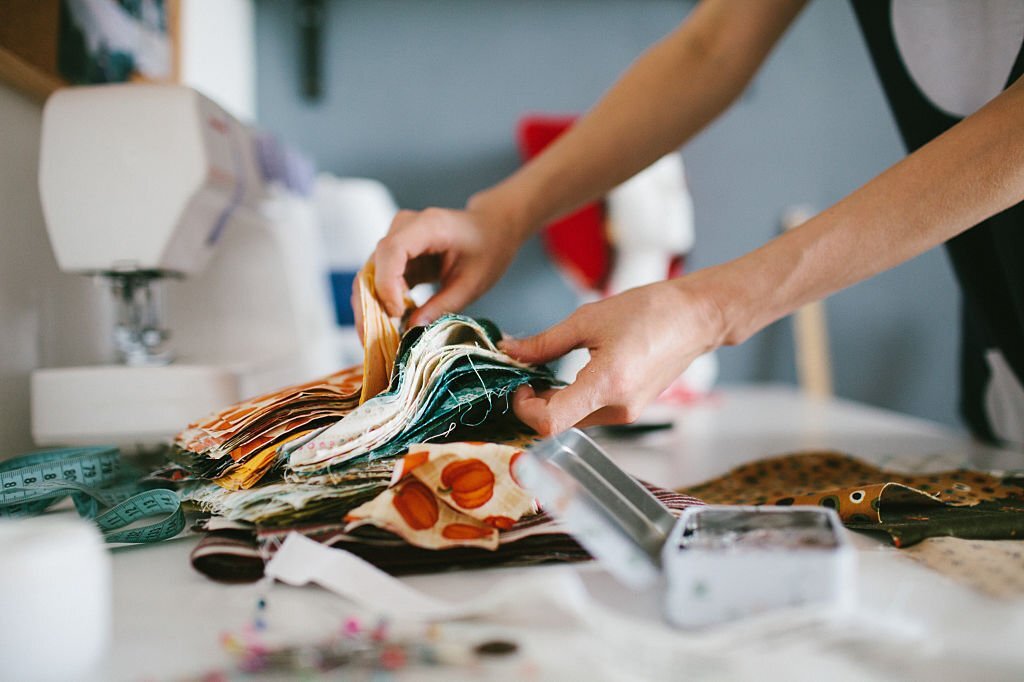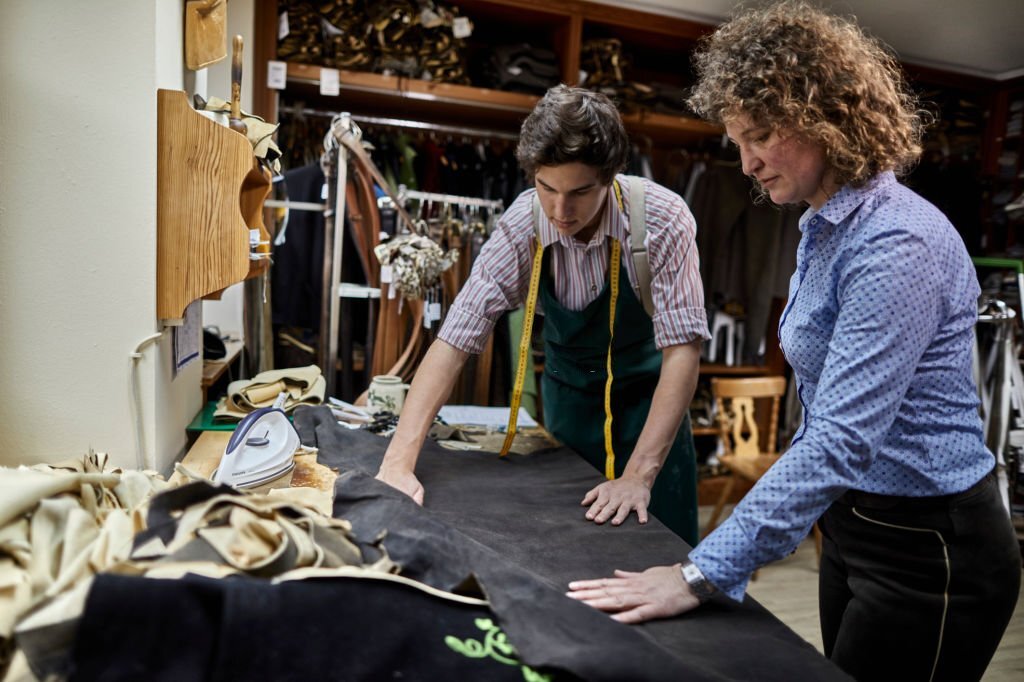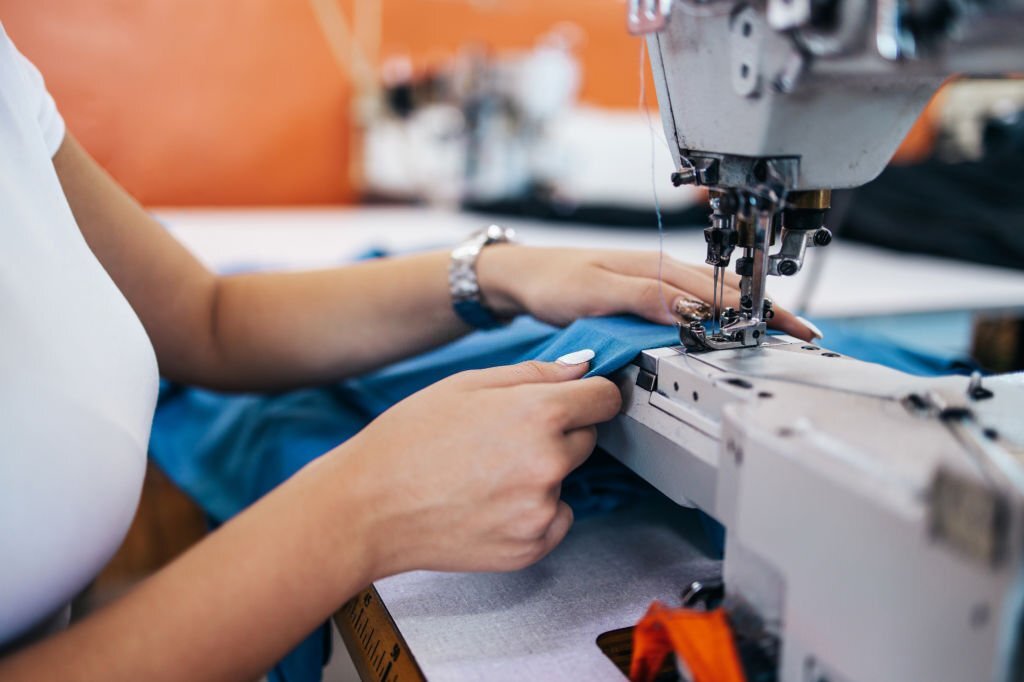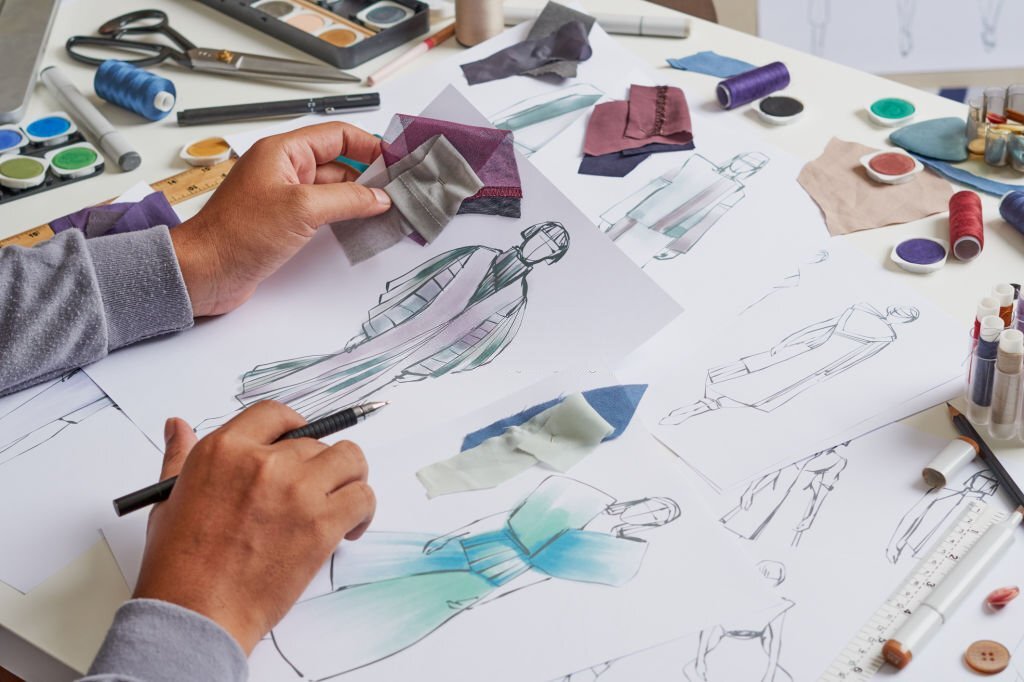As designs are conceptualized, brought to life on the runway, and sold in stores, fashion production management ensures the pragmatism of business is combined with the magic of style. We explore the complexities of fashion production management, unravelling its fundamental principles, strategies, and pivotal role in driving fashion enterprise success in this comprehensive guide.
Come along on a journey to understand the path to mastering fashion product management, whether you are a growing designer, an entrepreneur, or a seasoned professional.
What is Production Management in Fashion?

Production management in the fashion industry refers to the strategic planning, collaboration, and oversight of the different processes involved in taking a fashion product from its initial conception to its ultimate presentation in the market.
It includes a broad variety of tasks, such as design, material procurement, production, quality assurance, and distribution. Making sure that items are created effectively, economically, and by the specified quality standards and schedules is the main objective of production and business management in the fashion industry.
This field requires coordinating the efforts of several groups, including those of designers, merchandisers, suppliers, manufacturers, and logistical companies. Manufacturing scheduling, quality control, resource management, and overcoming obstacles that may come up throughout the manufacturing process are all tasks that fashion production managers are in charge of.
Fashion product management is essential in maintaining a careful balance between artistic expression and operational effectiveness given the dynamic nature of the fashion business, where trends may change quickly and demand can be unpredictable.
Stages of Product Development in the Fashion Industry

1. Market Research and Ideation
Examining customer preferences, existing fashion trends, and competitors are all part of market research. It enables designers to comprehend the state of the industry and locate prospective markets for new goods.
Ideation is the process of coming up with original ideas based on information gathered from market research. Designers construct the original vision for their collections by generating ideas, finding inspiration from a variety of sources, and so forth.
2. Concept Development
Concept development starts by shaping the undeveloped concepts from market research into unified themes or narratives for the collection. Mood boards, colour schemes, and other visual references are created by designers to capture the desired appearance and feel of the finished goods. This phase serves to build a solid base for the design direction.
3. Design and Sketching
Designers convert their conceptual ideas into thorough design drawings at this phase. The silhouette, dimensions, and essential design components of the clothes are depicted in these illustrations. To guarantee that their artistic vision is faithfully conveyed, designers take into account fabric drapes, patterns, and colour combinations.
4. Technical Design
Technical designers fill the void between innovative concepts and practical production methods. They produce very precise technical drawings that give pattern creators and manufacturers precise measurements, stitching information, and building instructions. These blueprints guarantee that the design can be faithfully replicated during the clothing production process.
5. Pattern Making
The technical drawings are used by pattern makers to create patterns that act as templates for cutting fabric parts. These patterns guarantee consistency across sizes and direct the garment’s construction. Making patterns is a crucial step in ensuring the finished product has the fit and shape you want.
6. Prototyping and Sampling
By employing the created designs and selected materials, prototypes of the clothing are made. Clothing sample production is important as these samples are the first concrete examples of the designs and provide a framework for further work. Before going into full production, designers and manufacturers may find any problems and make the required corrections by using prototypes.
What is MOQ in clothing? MOQ stands for “Minimum Order Quantity” in the context of clothing and other manufacturing industries. It refers to the minimum number of units or pieces of a particular clothing item that a manufacturer or supplier requires a buyer to order in a single order. It’s important for buyers to consider MOQs when working with manufacturers or suppliers, especially if they are smaller businesses or startups with limited resources.
7. Fitting and Iteration
Fittings entail putting the prototype clothes on models or dress forms to assess how well they fit, how comfortable they are, and how they look overall. To attain the desired fit and design aesthetics, designers and fit technologists evaluate how the clothing interacts with various body types and make iterative alterations.
8. Material Sourcing and Procurement
To make designs come to life, materials are essential. Materials including fabrics, trimmings, buttons, and accessories are sourced and purchased at this stage. Considerations made by designers and sourcing teams include material quality, availability, pricing, and sustainability.
9. Production Planning
Production planning entails a methodical organization of the clothing production process. Fashion Production managers apparel produce a thorough plan that specifies the sequence of events, the production schedule, and the distribution of resources like personnel and equipment. Planning effectively makes sure that manufacturing goes off without a hitch and on time.
10. Production and Quality Control
At this point, the finished clothes are mass-produced using the authorized designs and patterns. Throughout the process of production in fashion, quality control procedures are used to spot and fix any flaws or anomalies. This guarantees that every garment satisfies the brand’s quality requirements.
How to Improve Your Clothing Production Process?

1. Streamline Communication
Create effective routes of communication between the design, production, and other appropriate divisions. To make sure that everyone is aware of design alterations, material availability, and production timelines, use collaborative tools and software.
2. Implement Lean Manufacturing Principles
Adopt the principles of lean to minimize lead times, remove waste, and boost productivity. Recognize and reduce non-value-added manufacturing activities including excess inventories and overproduction.
3. Invest in Technology
Make use of technological tools including 3D modeling programs, ERP systems, and product lifecycle management (PLM) software. These technologies help improve decision-making, increase visibility, and streamline operations.
4. Enhance Supply Chain Visibility
By keeping an eye on inventory levels, tracking supplies, and successfully managing suppliers, the supply chain can be kept transparent. Making informed manufacturing decisions and minimizing delays are both facilitated by this.
5. Optimize Inventory Management
To cut expenses associated with keeping inventory and minimizing surplus stock, adopt just-in-time inventory management. This strategy minimizes the danger of overstocking by ensuring that resources are ordered and received as needed.
6. Focus on Quality Control
To find faults early in the clothing production process, establish rigorous quality control methods at multiple stages. Regular testing, audits, and inspections can assist in preserving consistency in quality and minimizing rework.
7. Sustainability Integration
Include sustainable manufacturing methods in your workflow. This might involve utilizing environmentally friendly materials, reducing waste, and putting into practice energy-efficient fashion product development processes.
Challenges in Fashion Product Management

Due to the ever-evolving and complicated traits of the sector, managing the creation of fashion has its own unique set of difficulties. Here are some major obstacles that experts frequently face:
Rapidly Changing Trends
It might be difficult to match production schedules with fluctuating customer preferences since fashion trends change frequently. To efficiently create things that are in demand while avoiding an excess of out-of-date styles, manufacturers must modify their methods.
Seasonal Demand Variability
Seasonal demand swings are common in the fashion business. It can be challenging to balance production capacity with these changes since predicting demand incorrectly or inappropriately might result in excess inventory or lost sales opportunities.
Short Lead Times
Shorter production lead times are a result of fast fashion and consumer demand for speedy deliveries. Product quality must be maintained while meeting these short deadlines, which calls for effective coordination and strong supplier cooperation.
Global Supply Chain Complexities
It’s common practice in the fashion industry to get supplies and parts from several international vendors. The supply chain may be impacted and delayed as a result of geopolitical developments, interrupted commerce, and logistical difficulties.
Sustainability and Ethical Concerns
Concerns over ethical and sustainable production methods are growing among consumers. It might be difficult to incorporate these ideas into manufacturing while keeping costs down.
Cost Management
Profit margins may be impacted by fluctuating overhead costs, labour costs, and material costs. It’s crucial to strike the correct balance between high-quality outputs at a reasonable cost.
Example of Production Management: Creating a Collection of Dresses

Think of a clothing line that specializes in dresses for ladies. For the approaching spring season, they intend to produce a new collection. How production and business management in fashion would work would be as follows:
Market Research and Concept Development
- The company’s designers research trends, analyze market demand and look at magazines, fashion shows, and social media for inspiration.
- Using floral patterns, pastel colours, and spring-friendly fabrics, they came up with a concept.
Design and Sketching
- Designers sketch out detailed designs for the dresses with the fabrics and design elements they choose.
- In these sketches, you can see the silhouette, neckline, sleeves, and anything else that makes each dress unique.
Technical Design and Pattern Making
- Measurements and construction details are included in the technical drawings created by technical designers.
- To ensure accurate sizing and fit, pattern makers use these drawings to make paper patterns or digital patterns.
Sample Creation and Fitting
- Using the developed patterns and fabrics, prototypes of the dresses are made.
- Samples are fitted on models to see how they fit, how comfortable they are, and how they look overall. If necessary, adjustments are made.
Material Sourcing and Procurement
- Suppliers for fabrics, trims, and other materials are identified by the company’s sourcing team.
- Materials are chosen based on the design vision and quality standards.
Production Planning
- A fashion production manager allocates labour and machinery for each dress style according to a detailed production plan.
- The collection’s launch date and the lead time for materials are considered when they set a timeline.
Production and Quality Control
- The production team begins manufacturing the dresses based on the approved designs and patterns.
- To ensure a high level of quality, quality control experts inspect stitching, seams, and finishing regularly.
Fitting and Final Approval
- To make sure the final dresses meet fit and design specifications, they are fitted on models one more time.
- The dresses move on to the finishing stage once they’re approved.
Finishing and Packaging
- Any additional embellishments, labels, or tags are applied to the dresses.
- To ensure they are presented professionally, they are carefully packaged in branded packaging.
Distribution and Marketing
- A dress is distributed to retail stores, online marketplaces, or other sales channels.
- A marketing campaign, including social media posts and promotional campaigns, is launched to generate interest in a product.
Feedback and Improvement
- Customer feedback and sales data are collected to assess the effectiveness of the collection.
- Future iterations of the design and improvements to production are informed by this feedback.
Production Management Software

Businesses that manufacture their products employ a kind of ERP (enterprise resource planning) software known as production management software. This kind of software helps organizations in the fashion sector in managing, organizing, and tracking the production of their goods.
The software helps production managers fashion in project planning, budget management, and monitoring the progress of each stage of the manufacturing process. The technology may be used to minimize lead times for faster delivery, track inventories, monitor any changes to anticipated costs or completion dates, and simplify your supply chain.
The following characteristics are included in the top software of product management fashion for clothes producers and retailers:
- Analytics of performance indicators using dashboards and mobile devices in real-time
- MRP and scheduling
- Scheduling and tracking workers
- Complete product history and workflow visibility
- Fully automated EDI processing
- Control over yield, scrap, and rework metrics
- Powerful dashboards and diagrams to visualize workflows
- Detailed labelling capabilities
Benefits of Using Production Management Software
Production management software not only makes it easy to keep an eye on how your clothes business is doing, but it may also save you money. One of the most significant advantages of cloud-based software is its adaptability. You may interact and communicate with everyone engaged in the fashion product development process, irrespective of where they are situated, and you can virtually examine your data from anywhere.
Additionally, this kind of software may assist in more efficient project management. Software of product management fashion gives you better visibility into project specifics and significant milestones whether you are in charge of a project within your own Apparel Company or working as a vendor for a different customer. This enables you to keep track of the project’s progress at any given time and make the necessary tweaks or adjustments to get the task done effectively.
Future Trends in Fashion Production Management

Technology advances, shifting customer preferences, and a rising focus on sustainability are shaping future trends in fashion production management. Observe these major tendencies for the future:
Digitalization and Industry 4.0
Clothing production processes will change as a result of the Internet of Things (IoT), artificial intelligence (AI), and automation being integrated. Real-time monitoring, predictive maintenance, and effective resource allocation will be possible in smart factories that are equipped with sensors and data analytics.
Virtual Sampling and 3D Prototyping
Utilizing 3D technology for virtual sampling will eliminate the need for actual prototypes, saving time and costs. Before physical manufacturing starts, designers and manufacturers may work together online to make design revisions and ensure accuracy.
Data-Driven Decision-Making
Big data analytics will be essential for streamlining the clothing production process. Data will be used by brands to precisely anticipate demand, enhance inventory control, and customize items for certain market niches.
Supply Chain Transparency and Traceability
Blockchain technology will increase supply chain transparency and enable customers to track a garment’s journey from raw ingredients to completed products. This will allay worries regarding genuineness and ethical sourcing.
Collaborative Design Platforms
Platforms for collaboration built on the cloud will enable seamless communication among suppliers, manufacturers, and designers. Streamlining the design and fashion product development process will cut down on mistakes and delays.
AI-Powered Demand Forecasting
More accurate consumer trends and demand patterns will be predicted by AI systems. As a result, surplus inventory will be reduced and stock levels will be optimized while brands may modify production schedules in real-time.
Augmented Reality (AR) in Production
The application of augmented reality in training, production, and quality assurance. It can assist workers in envisioning challenging tasks and provide them with real-time coaching.
Remote Collaboration and Tele-Production
By collaborating remotely and using tele-production techniques, businesses will be able to collaborate with suppliers and clothing manufacturers for small businesses all around the world, increasing the potential for collaborations.
Key Takeaways
In the fashion sector, mastering production management is a top priority. This thorough guide has shed light on the process from initial conception to public release, highlighting the crucial role that production management plays in an ever-changing environment.
Staying ahead of the competition requires adopting technology advancements, environmentally friendly practices, and data-driven insights as the market changes. The implementation of attractive designs that grace the world’s runways and sidewalks comes with major, yet achievable, hurdles.
With the help of this guide beginning designers, seasoned experts, and progressive businesspeople may now navigate the thrilling journey of fashion production management with assurance and skill.







